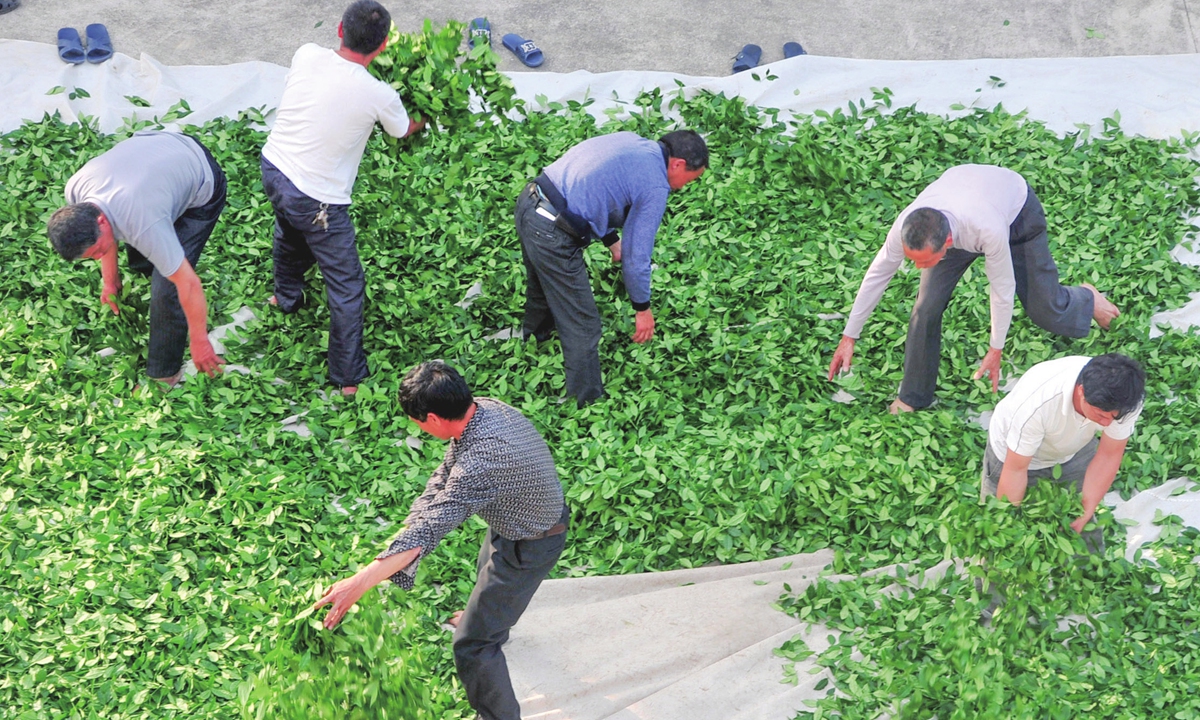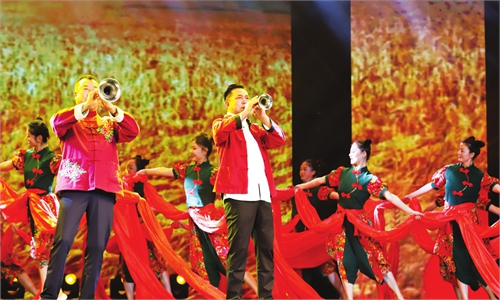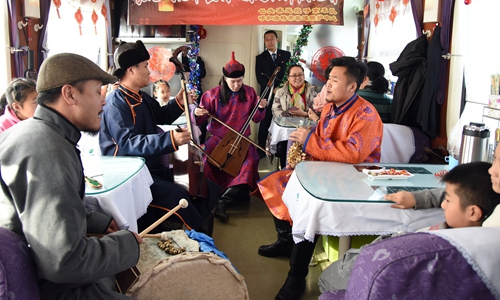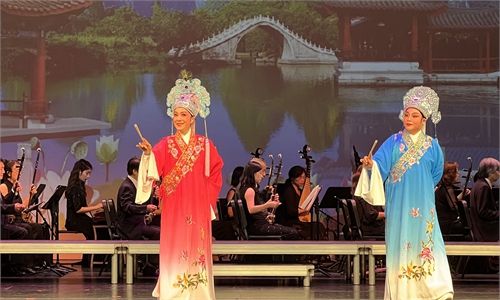ARTS / CULTURE & LEISURE
Cultural Heritage

Tea farmers work in the field in Quanzhou, Fujian Province. Photo: IC
Tea-making: Ancient Chinese way of life becomes part of global cultureChina is the country of origin, and the earliest planter and producer of tea.
According to historical records, the practice of drinking tea started from the Western Han Dynasty (202BC-AD8) and flourished in the Tang Dynasty (618-907). Over the centuries, tea has deeply integrated itself into Chinese culture.
Tea plantations in China are mainly distributed along the southern and northern regions along the Yangtze River and the southern and southwestern parts of the country. Based on different natural conditions, six main categories of tea have formed in various regions: green (unfermented), yellow, white (both slightly fermented), dark tea (post-fermented), oolong (half-fermented) and black (fully fermented).
Tea is part of the daily life of many Chinese. It is usually drunk before meals; when entertaining guests, tea is a must.
Additionally, tea is also believed to be good for one's health, being able to detoxify the body, improve eyesight, lower blood pressure and help people lose weight, just to name a few.
Over the centuries, an entire culture sprang up around tea.
During the Tang Dynasty, tea expert Lu Yu systematically summarized in his book The Classic of Tea the production and drinking of tea as well as the frugal spirit of the tea ceremony. Some scholars like him also paid great attention to the spiritual enjoyment and moral standards of drinking tea, placing great emphasis on tea vessels, the water for making tea and the art of boiling tea.
Moreover, they also integrated the philosophies of Confucianism, Taoism and Buddhism into their tea theories. They composed many poems, totalling more than 400 poems about tea, during this dynasty, laying the foundation for the tea culture of ethnic Han people.
Chinese tea culture also spread throughout the world during ancient times. During the Tang Dynasty, it was introduced to Japan and Korea and further to West Asia through the Maritime Silk Road and the Silk Road. In the early 17th century, it arrived in Europe.
Chinese tea enjoys a complete system of inheritance.
For instance, one family in Anxi county, Fujian Province inherited its tieguanyin (a kind of oolong tea) making techniques over 13 generations.
China's traditional tea processing techniques and their associated social practices were added to UNESCO's Representative List of the Intangible Cultural Heritage of Humanity in November 2022.
Global Times



